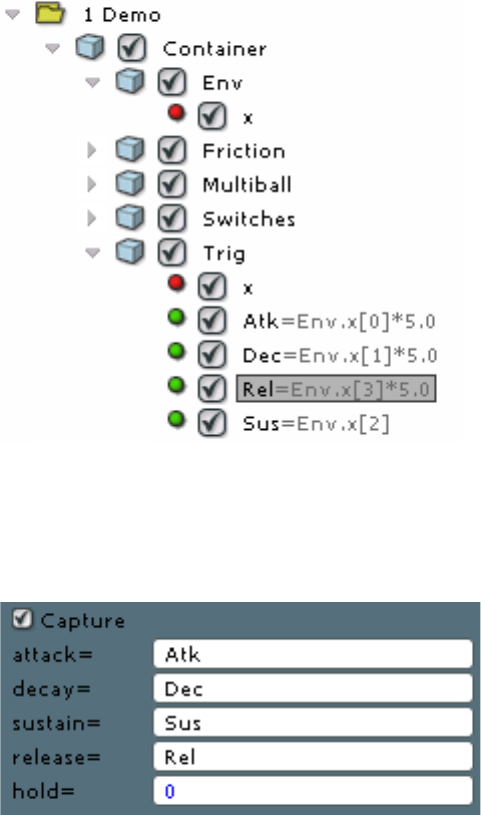
The Lemur User Manual
57
use Env.x[3] * 5.0. Note that we do not scale the value for Sustain, since this
is just a value between 0 and 1.
When you’re done, your Project Browser should look like this:
The final step is to enter these Variable names in the Behavior
Properties of the Trig Object. Enter Atk for Attack, Dec for Decay, Sus for
Sustain, and Rel for Release as shown below. As the Variables are local to
the Trig Object, you don’t have to write out the complete addresses (which would be
Trig.Atk, Trig.Dec, etc.).
Now you can test your envelope by hitting the Pads Object. You don’t even
need an attached Synthesizer to see what’s going on. Dial in the envelope values via
the MultiSlider and you will see how the changes of the sliders affect the
brightness envelope of the pad.
3.4.4. Using Custom MIDI Messages
Custom MIDI messages provide simple means to generate very
complex MIDI data by entering Expressions for all the parameters of the
chosen MIDI message. With normal MIDI assignments you can only assign the
selected variable to one parameter of the message. With Custom MIDI messages
you gain complete freedom to assign any value or expression to any one of the
different parameters of the message. And remember that expressions can use all
values of all Objects in your Project.
For a Note On message the parameters would be:
• Pitch
• Velocity


















